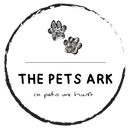Our pets' paw pads are as useful as they are fragile. Find out what they do and how to care for them.
Role
Pads have two very important roles to play in protecting the extremities of our pets' paws. A paw pad is both an insulator and shock absorbant. They serve the same purpose as shoes for us humans. Without the pads, animals would not be able to walk on hard, soft, wet, dry, cold or hot floors.
The pad thickens with age and according to the animal's activity level.
Care
Paw pads adapt over time to the animal's activity, so it is important to increase the frequency and length of outings as your pet grows, while remaining progressive, so as not to cause injury. It is also recommended to diversify the terrains on which you will walk.
It is necessary to inspect the paw pads frequently to ensure that they are in good condition.
Preventive care:
In winter, clean the paw pads and the surrounding area thoroughly to avoid leaving any residue of snow, ice, or salt. (Paw cleaner)
Moisturize the paw pads with balms or creams all year round. Cold weather can cause frostbite and cracking, but hot weather (and asphalt) can cause very painful lesions.
For long-haired animals, it is imperative to cut the hair that grows between the pads. This hair can interfere with gait.
If your pet is prone to injuries or irritations in the pads, you can invest in boots specially designed for this purpose.
If you have a garden, it is recommended to remove anything that could hurt (glass residues, sharp objects, etc.).
Do not hesitate to take advice from your veterinarian, he will know how to guide you.
Curative care:
Your pet can injure its paw pads in several ways.
Whether it's frostbite in the winter, burns in the summer, foreign objects during a walk in the woods, or cuts to the pad, the following steps are recommended:
Check the severity of the injury. A heavily bleeding pad should be checked by a qualified veterinarian. Do not hesitate to compress the wound on the road, to avoid too much bleeding.
A superficial wound can be treated at home, while remaining under supervision.
In the case of a minor injury, the first step is to clean the wound with clear water and then check that no foreign body is blocked. It is then advisable to apply an antiseptic (or an iodine solution) to disinfect the wound. It is preferable to apply a bandage to prevent the animal from licking the wound. If you prefer, you can opt for an e-collar, while making sure the wound remains as clean as possible.
When the wound is clean and no longer bleeding, you can apply a healing and/or moisturizing cream.

Our young Rhodesian recently injured his carpal pad. It took a few days of disinfection and keeping the wound clean. We applied a quality honey-based cream, and the result is amazing. Do not hesitate to regularly apply balm, it will make the pads of your pet all soft and pleasant to the touch!
Watch this space for more updates on the Pets Ark!
The Pets Ark family


